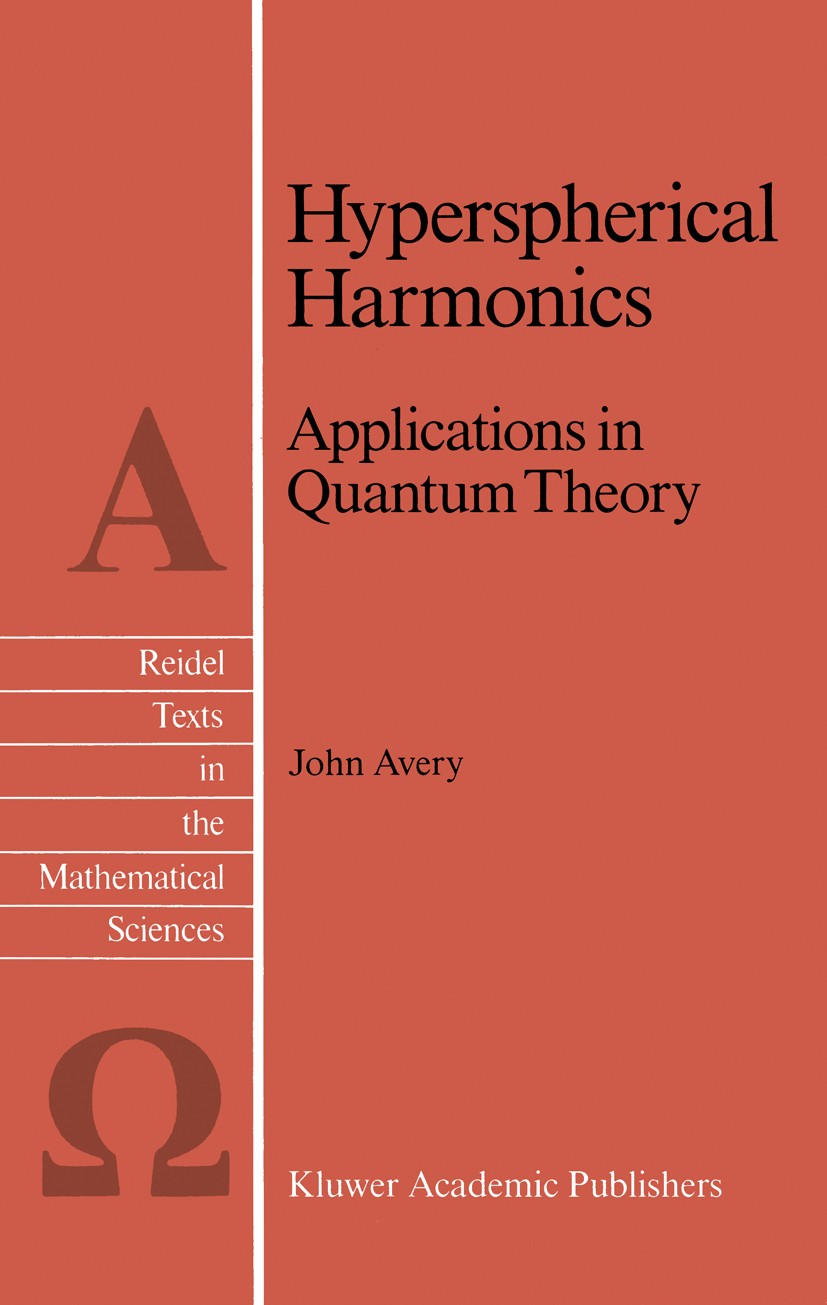| 書(shū)目名稱(chēng) | Hyperspherical Harmonics | | 副標(biāo)題 | Applications in Quan | | 編輯 | John Avery | | 視頻video | http://file.papertrans.cn/431/430694/430694.mp4 | | 叢書(shū)名稱(chēng) | Reidel Texts in the Mathematical Sciences | | 圖書(shū)封面 |  | | 描述 | where d 3 3)2 ( L x - -- i3x j3x j i i>j Thus the Gegenbauer polynomials play a role in the theory of hyper spherical harmonics which is analogous to the role played by Legendre polynomials in the familiar theory of 3-dimensional spherical harmonics; and when d = 3, the Gegenbauer polynomials reduce to Legendre polynomials. The familiar sum rule, in ‘lrlhich a sum of spherical harmonics is expressed as a Legendre polynomial, also has a d-dimensional generalization, in which a sum of hyper spherical harmonics is expressed as a Gegenbauer polynomial (equation (3-27?: The hyper spherical harmonics which appear in this sum rule are eigenfunctions of the generalized angular monentum 2 operator A , chosen in such a way as to fulfil the orthonormality relation: VIe are all familiar with the fact that a plane wave can be expanded in terms of spherical Bessel functions and either Legendre polynomials or spherical harmonics in a 3-dimensional space. Similarly, one finds that a d-dimensional plane wave can be expanded in terms of HYPERSPHERICAL HARMONICS xii "hyperspherical Bessel functions" and either Gegenbauer polynomials or else hyperspherical harmonics (equations ( 4 - 27) and ( 4 - 30) | | 出版日期 | Book 1989 | | 關(guān)鍵詞 | Atom; atoms; hydrogen; quantum theory; symmetry; wave | | 版次 | 1 | | doi | https://doi.org/10.1007/978-94-009-2323-2 | | isbn_softcover | 978-94-010-7544-2 | | isbn_ebook | 978-94-009-2323-2Series ISSN 0921-9315 | | issn_series | 0921-9315 | | copyright | Kluwer Academic Publishers 1989 |
The information of publication is updating

|
|
 |Archiver|手機(jī)版|小黑屋|
派博傳思國(guó)際
( 京公網(wǎng)安備110108008328)
GMT+8, 2025-10-6 04:07
|Archiver|手機(jī)版|小黑屋|
派博傳思國(guó)際
( 京公網(wǎng)安備110108008328)
GMT+8, 2025-10-6 04:07


